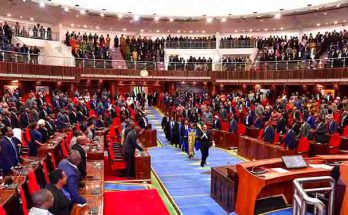 It was not too long ago when India was constantly touted as the global hub for small cars. While this script continues unchanged, global automakers now see its role expand to include two-wheelers, sedans, trucks and buses.
It was not too long ago when India was constantly touted as the global hub for small cars. While this script continues unchanged, global automakers now see its role expand to include two-wheelers, sedans, trucks and buses.
In 2016-17, India exported 6.02 lakh passenger cars, up 13 per cent from 5.32 lakh units in the previous year. Utility vehicles (comprising MUVs, SUVs and multipurpose vehicles) saw a 30 per cent jump in exports to 1.54 lakh units.
Positive cost structure
The story will only grow in the coming years as emerging markets across Latin America, Africa and ASEAN will need similar vehicles. It is only natural, therefore, that the supplier competencies developed here will be leveraged to meet the needs of these markets. Customers here are extremely price-conscious and this is where the cost structure developed in India will come in handy.
This is as evident in the two-wheeler space where companies like Yamaha are looking at Africa as the next growth engine with India playing a big role. This is where the company’s recently commissioned Chennai plant will be part of the script where competitively priced commuter motorcycles can be shipped out to countries in central and West Africa.
At this point in time, some economies may not be in the best of shape thanks to the oil price crisis but it is only a matter of time before things are back in shape and this is when Yamaha will bank on India to lend a shoulder to its Africa business.
Bajaj Auto is already the largest exporter of two-wheelers from India, and Africa is one of its most important markets. It now plans to enhance its ASEAN presence with global ally, KTM, whose bikes are already being made at the Bajaj plant in Chakan and exported to the US, Europe and Australia.
TVS Motor, likewise, has been revving up its exports business and, once again, Africa will be a key play. When Bharat Stage VI norms become a reality in 2020, Honda will use its India two-wheeler base to increase exports of bikes and scooters to countries, which will be adopting similar emission norms.
The global hub
Daimler and Volvo have been using India as their hub to service truck markets in the Middle-East, Africa, ASEAN and SAARC nations. Since the time it kicked off operations in 2013, Daimler India Commercial Vehicles (DICV) has exported over 7,500 trucks to 33 countries with 10 more to be added this year.“In addition, production of a third truck product family will start soon. The new sub-nine tonne vehicle will initially be designated only for exports as Fuso-brand variants,” says Erich Nesselhauf, Managing Director and CEO, DICV.
As for buses, DICV has exported more than 1,000 units to 10 markets since 2014. This year, it plans to ship out the nine-tonne Mercedes-Benz school bus to the Middle East.
VECV, the Volvo-Eicher joint venture, exported 4,544 medium and heavy trucks in 2016-17, up from 3,152 units in the previous year. In buses, Volvo’s exports to Europe focus on the intercity space. Its Swedish counterpart, Scania, plans to make India a global hub for sourcing of spare parts and exporting fully built buses and trucks to South Africa and Latin America.



